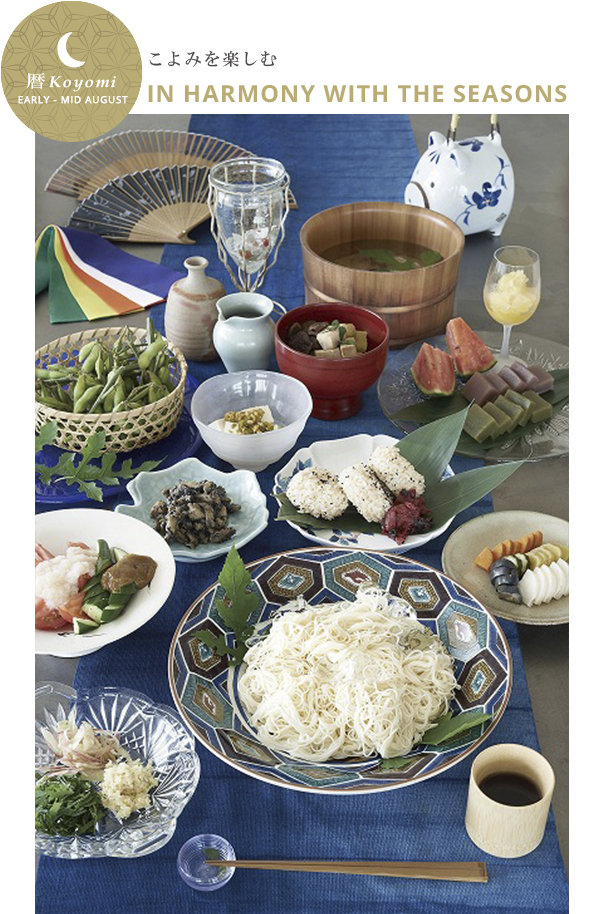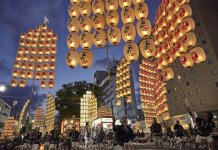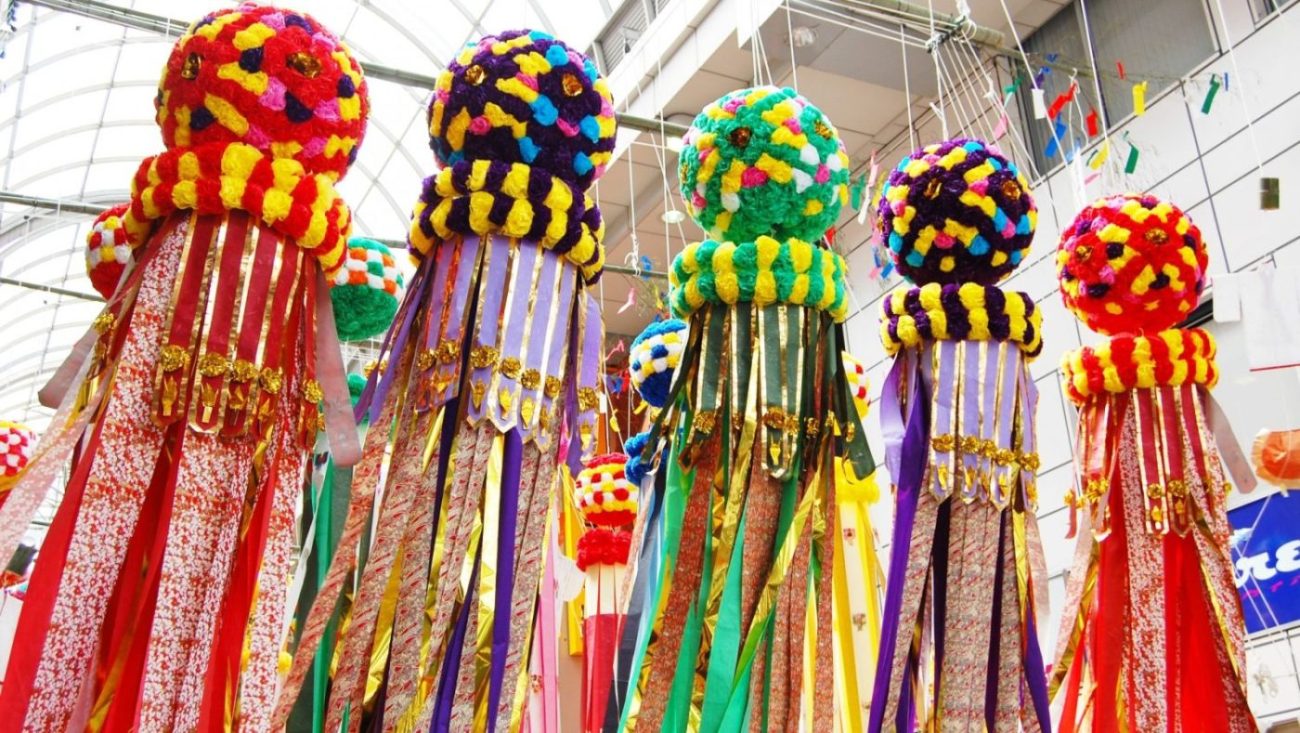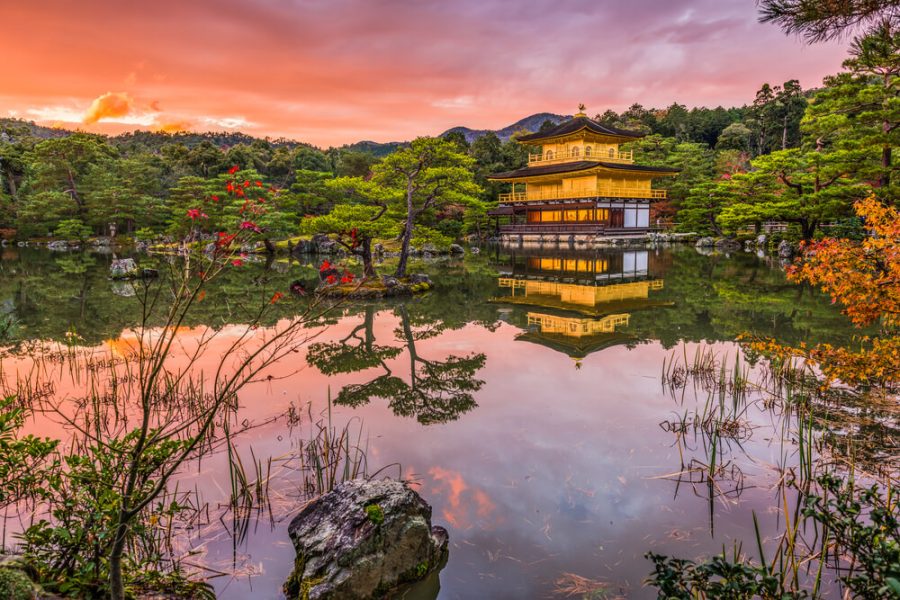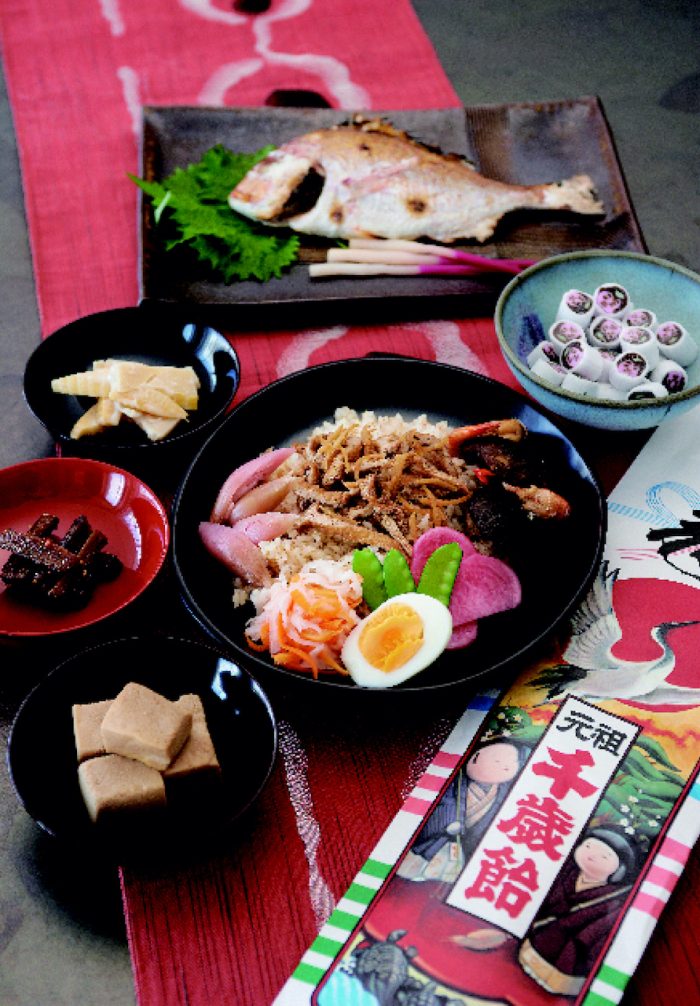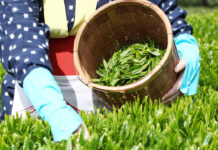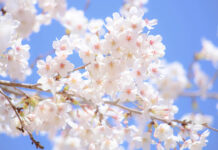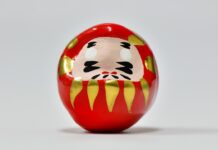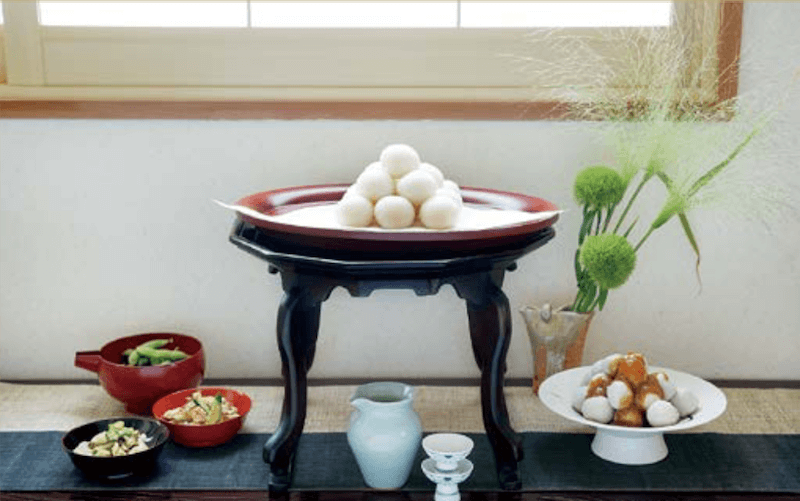The major festivals of the summer
Japan has four distinct seasons and there is a strong tradition of rituals and festivals closely connected to each season. Two of the major festivals of the summer are “Tanabata” and “Obon”. The actual dates of these events varies depending on the region, but both are festivals of remembrance, for literally ’communing’ with the souls of people passed away, including ancestors. The “Mukaebi (welcoming torch)”
and the “Okuribi (farewell torch)” are lit at each end of the Obon period to help souls navigate between worlds. Food also plays an important part in Japanese rituals. Pictured above are the seasonal delicacies of summer, such as chilled watermelon, somen (fine noodles usually eaten cold), edamame (young soya beans in the pod), azuki bean jelly,pickles… they all have significance. The origin of the 5 colored cloth and paper mulberry leaves
lies in the tradition of animism: they are used to thank mother nature and pray for a good harvest. This is a picturesque, traditional summer table.
Rieko Ido
A graduate of Kokugakuin University, researcher of ancient Japanese customs and knowledge, conducting technical analysis on findings to apply them to modern lifestyles. Currently teaches at Tama Art University.
 0
0

